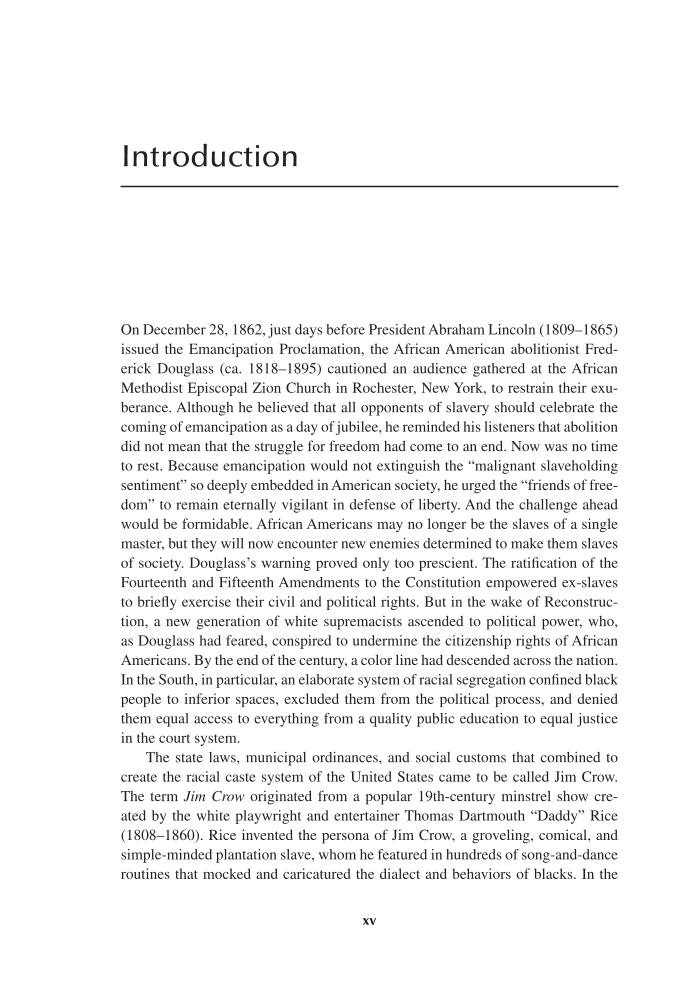xv Introduction On December 28, 1862, just days before President Abraham Lincoln (1809–1865) issued the Emancipation Proclamation, the African American abolitionist Fred- erick Douglass (ca. 1818–1895) cautioned an audience gathered at the African Methodist Episcopal Zion Church in Rochester, New York, to restrain their exu- berance. Although he believed that all opponents of slavery should celebrate the coming of emancipation as a day of jubilee, he reminded his listeners that abolition did not mean that the struggle for freedom had come to an end. Now was no time to rest. Because emancipation would not extinguish the “malignant slaveholding sentiment” so deeply embedded in American society, he urged the “friends of free- dom” to remain eternally vigilant in defense of liberty. And the challenge ahead would be formidable. African Americans may no longer be the slaves of a single master, but they will now encounter new enemies determined to make them slaves of society. Douglass’s warning proved only too prescient. The ratification of the Fourteenth and Fifteenth Amendments to the Constitution empowered ex-slaves to briefly exercise their civil and political rights. But in the wake of Reconstruc- tion, a new generation of white supremacists ascended to political power, who, as Douglass had feared, conspired to undermine the citizenship rights of African Americans. By the end of the century, a color line had descended across the nation. In the South, in particular, an elaborate system of racial segregation confined black people to inferior spaces, excluded them from the political process, and denied them equal access to everything from a quality public education to equal justice in the court system. The state laws, municipal ordinances, and social customs that combined to create the racial caste system of the United States came to be called Jim Crow. The term Jim Crow originated from a popular 19th-century minstrel show cre- ated by the white playwright and entertainer Thomas Dartmouth “Daddy” Rice (1808–1860). Rice invented the persona of Jim Crow, a groveling, comical, and simple-minded plantation slave, whom he featured in hundreds of song-and-dance routines that mocked and caricatured the dialect and behaviors of blacks. In the
Document Details My Account Print multiple pages
Print
You have printed 0 times in the last 24 hours.
Your print count will reset on at .
You may print 0 more time(s) before then.
You may print a maximum of 0 pages at a time.
















































































































































































































































































































































































































































































































































































































































































































































































































































































